Challenging Times for Sled Makers…Again
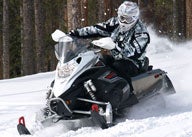
Economy the latest challenge for snowmobile industry
Just when snowmobile manufacturers thought it was safe to go back to concentrating on simply marketing its new models, along comes another shot at them. For much of the past decade, a lack of snow in most major sales areas caused industry woes. Dealerships were overloaded with sleds. But, sled makers reluctantly cut production to get dealer inventories in tune with consumer demand. Since snowy winters had been few, consumer demand was slow.
With inventories balanced, sled maker executives like Arctic Cat’s Chris Twomey told shareholders that he felt that sled sales would rebound. He was particularly confident at last year’s annual shareholders meeting. He knew that sleds like the high-performance Turbo ‘Z’ would be shown in a few months. This past September, at Hay Days in Minnesota, Arctic Cat unveiled a Sno Pro version of the turbo along with a new powder-oriented highmarker sled, the HCR.
Of course, that introduction followed a summer where fuel prices reached US$4 per gallon and had just started to taper off as the new sleds were unveiled. Oil sold for nearly US$150 per barrel at the peak. As we write this, current oil pricing is less than US$70 per barrel. Gasoline prices at our local fuel stop are now under US$2.40 per gallon. Things should be looking great for us powersports enthusiasts and even rosier for long suffering snowmobile executives.
Well, yes and no. Check out Mr. Twomey’s most recent remarks as he introduced Arctic Cat’s second quarter financials:
“We believe that innovative products will drive retail sales and market share gains. Dealer inventory levels are critical to the overall health of our business and we are confident that last year’s inventory reduction measures, and our strong product line-up, position us well compared to our competitors. We also remain focused on further cost reductions through our strategic sourcing initiatives and leveraging our efficiencies. Despite these positive factors, the current state of the U.S. economy, impacted by weak consumer spending and the global financial crisis, makes it difficult to fully assess the impact on our customers and business. As a result, we are not providing full-year guidance at this time. We will continue to closely monitor the macroeconomic environment, industry trends and dealer inventories.”
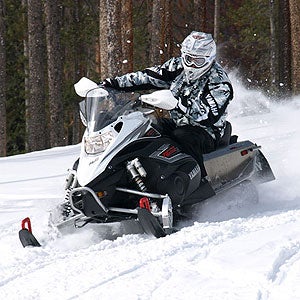 Regardless of the crisis du jour, snowmobilers can still ride and enjoy this most wonderful winter recreation. Let’s ride!
Regardless of the crisis du jour, snowmobilers can still ride and enjoy this most wonderful winter recreation. Let’s ride!He’s saying that despite getting inventories under control, introducing exciting new products, getting a bigger handle on manufacturing costs, and last season’s return to winter in key markets… well, he’s saying the world economy is in flux and no one, including Arctic Cat executives, knows what this will mean to sled sales. Well, that’s not totally true. Sled sales will suffer as consumers who may have been thinking about a new sled, revise that thinking and hold off until they are confident they can afford to upgrade without jeopardizing their home and their family.
In its most recent financial statement, Arctic Cat revealed that its snowmobile sales increased 1% to $98.4 million, up from $97.0 million in the prior-year quarter. And, good news, year-to-date snowmobile sales midway through the current fiscal year were up 10% to $119.8 million against last year’s sales of $108.9 million for the first six months.
The uptick in sled sales led to snowmobile-related products helping Arctic Cat’s Parts, Garments and Accessories (PG&A) sales grow 12% to $34.3 million in the 2009 second quarter versus $30.6 million for the same period last year.
The new sled sales increase couldn’t offset Arctic Cat ATV sales, which were down 9% to $125.4 million compared with $137.3 million in the prior-year six months. As with sleds, the wheel product line has a bright spot. ATV market growth continues strong where large-displacement engines power both the ATV and side-by-side utility segments. Arctic Cat’s new 2009 high-performance Prowler XTZ 1000 combines a side-by-side utility vehicle with an Arctic Cat-engineered 951cc engine. It’s the most powerful UTV available in the industry. Additionally, as the first manufacturer to offer a two-rider ATV vehicle, Arctic Cat builds on a reputation for innovation with a new luxury cruiser, the Thundercat TRV1000, which combines power with comfort that includes heated handlebars, passenger handgrips, a touring windshield and lockable travel case.
When its fiscal 2009 third quarter ends December 31, Arctic Cat management expects net sales to be up, but said it could not project future end-of-year financial results due to uncertainties with the weak U.S. economy, the slowdown in consumer spending and the current financial crisis.
While both US-based snowmobile manufacturers have welcomed new chief executives, Polaris’ new chief executive officer, Scott Wine, has been quoted as saying, “Polaris’ cash flow generation remains strong and our balance sheet is healthy. Although we realize the current macro-economic environment is challenging, we continue to make progress on our growth initiatives and as a result, raised our full year 2008 earnings per share guidance. Given the flexibility our strong financial position provides, we are able to adapt quickly to changes in the marketplace and remain dedicated to driving operational excellence and product innovation to maintain industry leading performance.”
Based on Wine’s assessment, business commentary from Forbes.com felt compelled to state that Polaris “…has hit a lucky streak amid unlucky times. The company beat analyst expectations for the third quarter and raised its guidance for the year.”
One analyst concluded, “For Polaris, good products are trumping a slow market.”
Indeed, Polaris snowmobile sales increased 3% for the 2008 third quarter, part of which was the fact that Polaris’ product mix consisted of more higher priced snowmobiles being shipped to dealers.
ATV sales increased 5% versus the same quarter in 2007. The key to the increase came from sales of the company’s side-by-side group and not from its traditional 4-wheeler ATV segment.
While Polaris’ Victory motorcycle sales were off 2%, its overall PG&A sales increased 20%, reflecting strength from all product lines and geographic regions. Third quarter PG&A sales directly benefited from shipments to snowmobile dealers of pre-season, snowmobile-related items for the upcoming snowmobile riding season.
With the challenge of tight credit working on consumer confidence, it’s hard to say how that will impact any powersports manufacturer. However, Polaris has told market analysts that its customers were still able to get credit approval for Polaris purchases, thanks to the company’s relationship with HSBC Bank and GE Money Bank. In 2008, more than half of Polaris products consumers were approved for credit by one of the two banks.
Will credit be a problem? Will threat of job losses impact consumers? Or, will it snow early and often? As we write this, snow has already arrived in the White Mountains of New Hampshire, home to early East Coast riding. There’s a threat of snow here in the Midwest as well. And let’s not forget that reported four feet of snow in the Rockies earlier this month.
Snowmobile manufacturers can only control the products they build. They can’t influence Mother Nature, who seems to be finally giving us a return to snowy winters. They can only do their best in the face of oil prices, economic threats, and whatever the dickens comes next. Because, as snowmobilers have known ever since the heydays of the 1960s with its 100-plus snowmobile brands that were replaced by the trying times of the 1970s and the demise of virtually all but a handful of those brands, the only control we have over this matter is pressing in the snowmobile throttle and spending a day on the trail spitting snow dust at the crisis du jour. Not to worry, snowmobile fans, the ever-present nattering nabobs of the 24-hour cable news channels will remind of you of the world’s travails when you return.
For the sled makers, times are tough. Times are challenging. What’s new? Let’s ride!



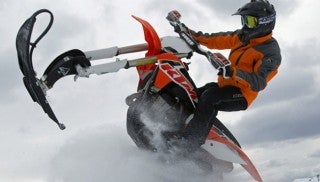
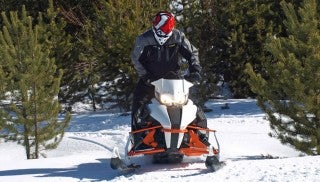
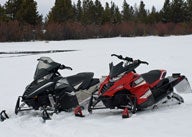


 Your Privacy Choices
Your Privacy Choices